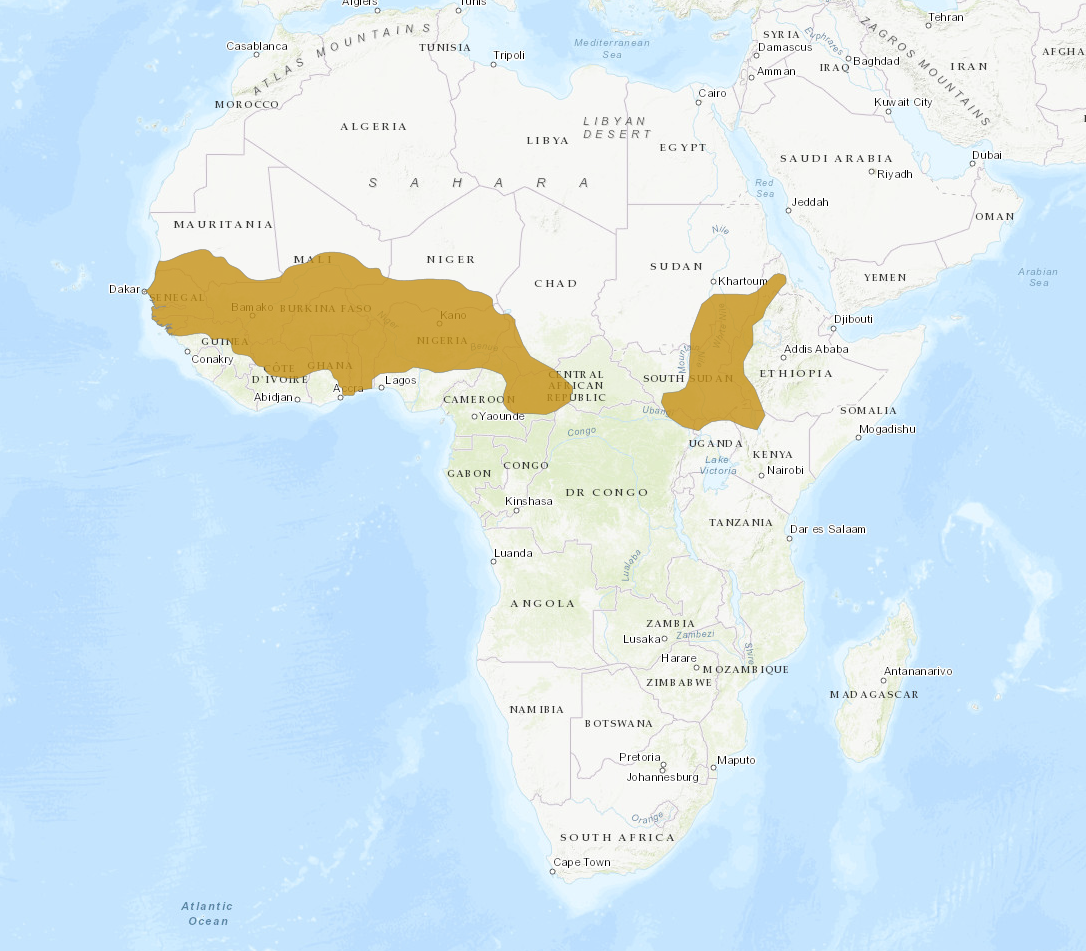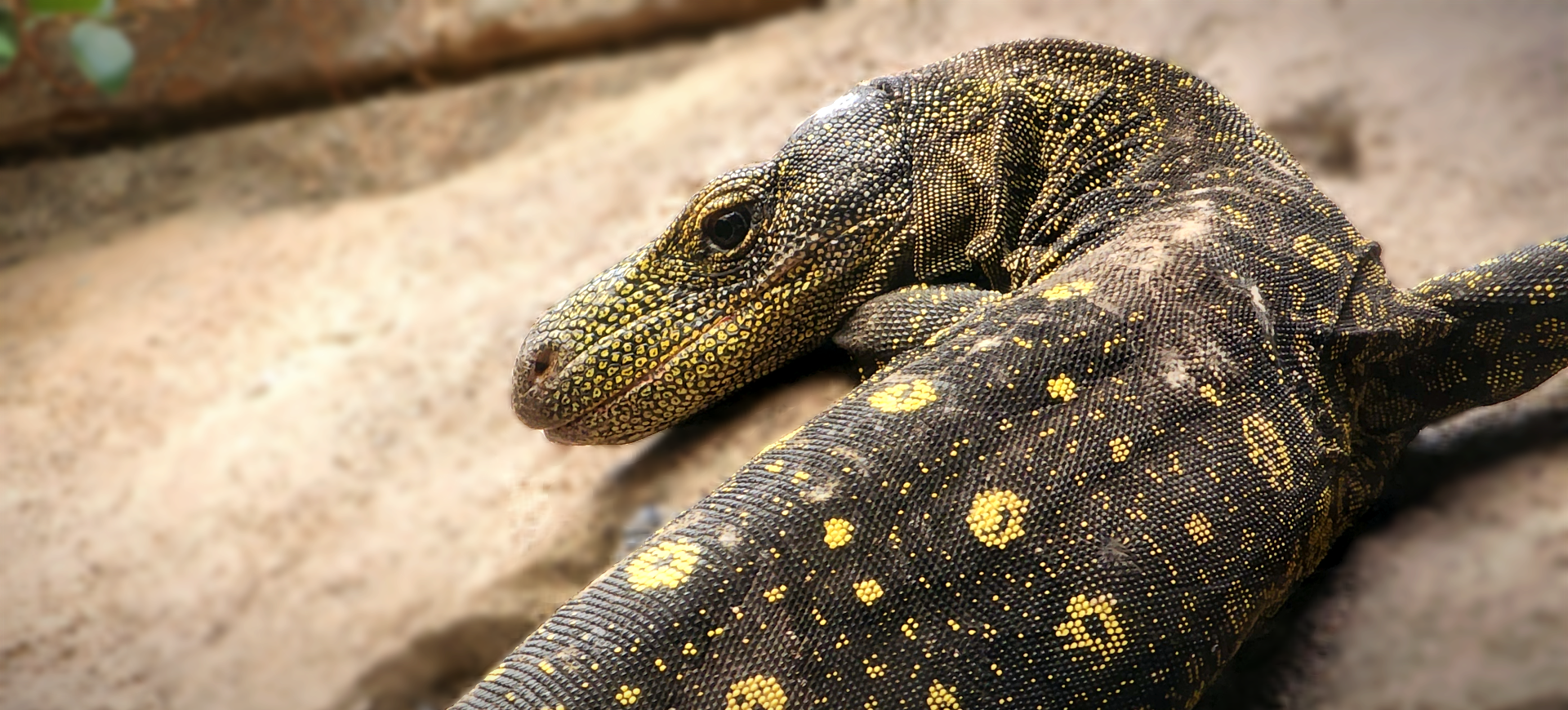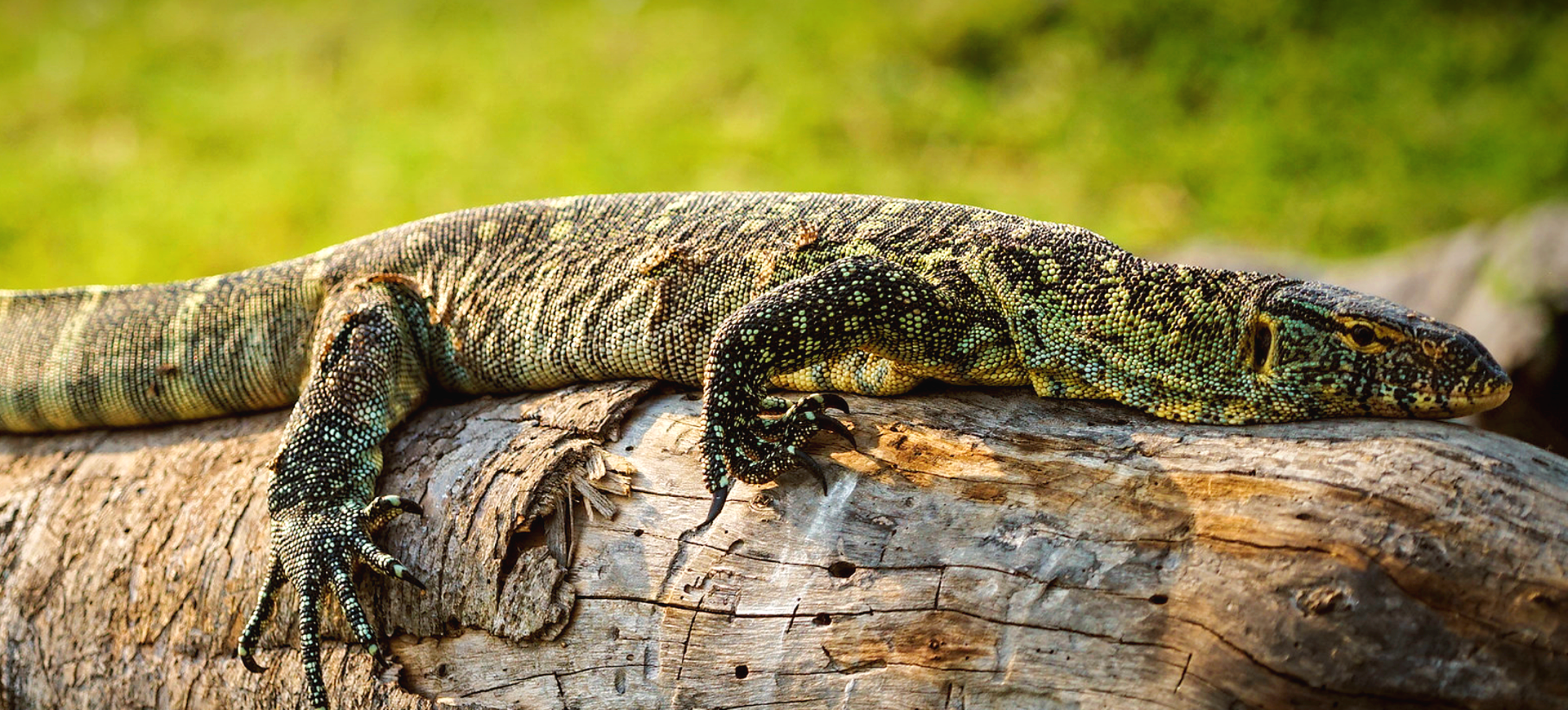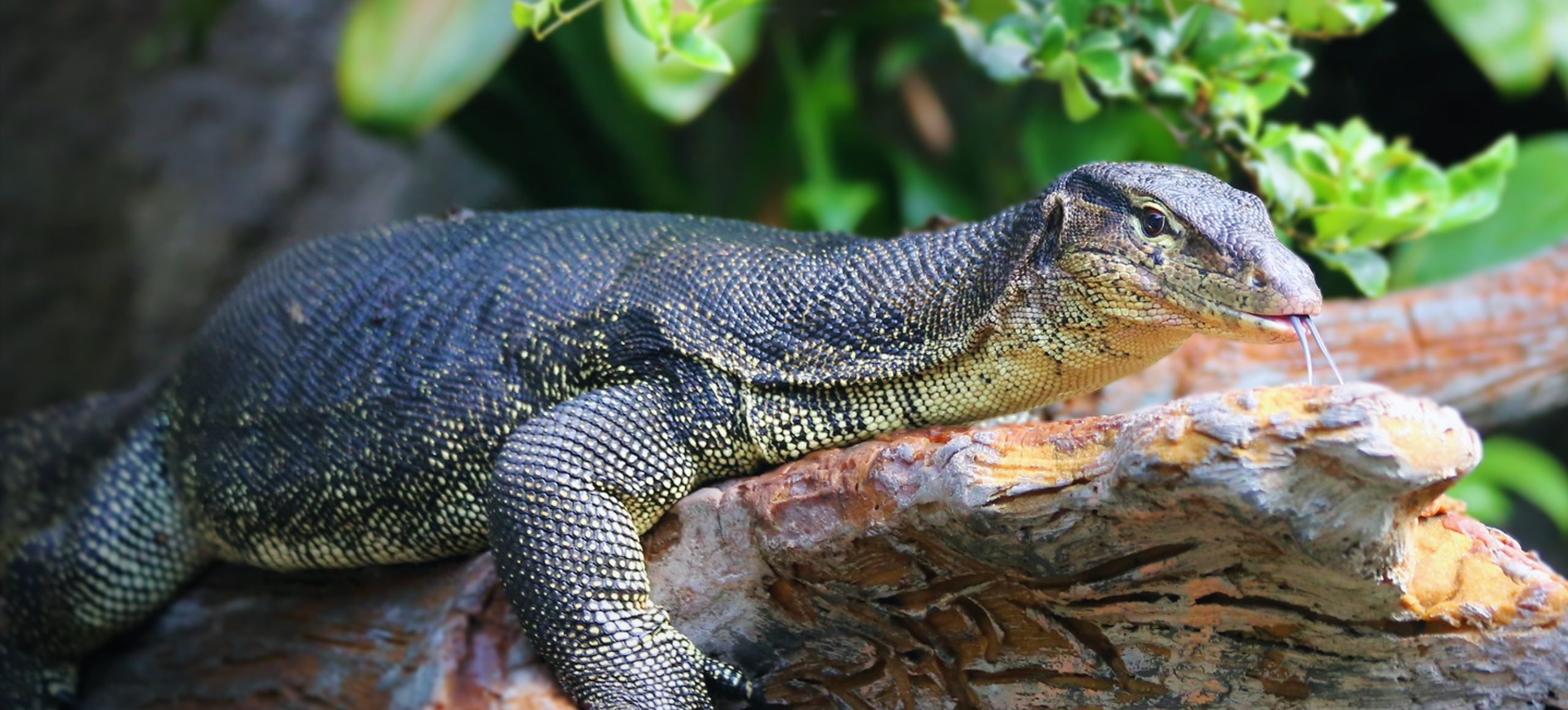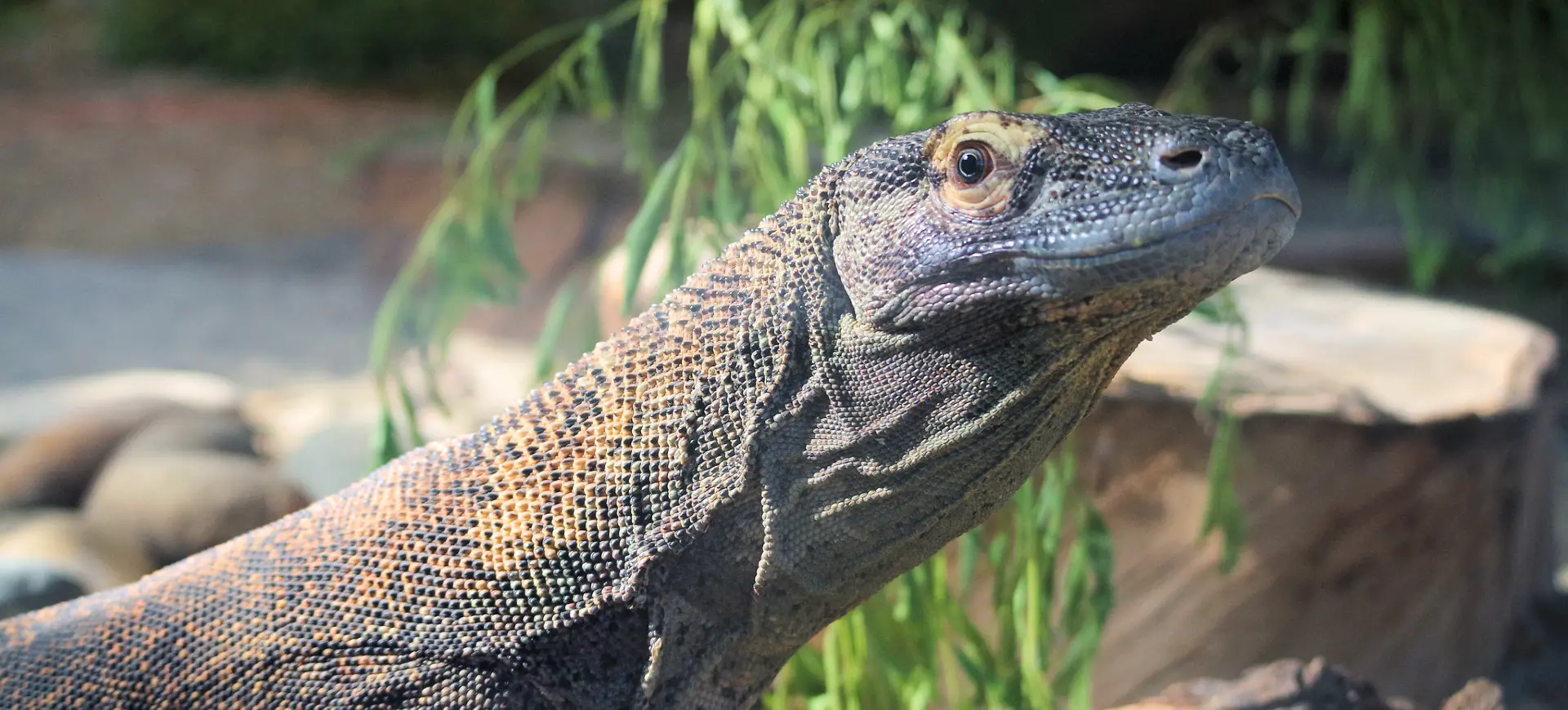Overview
The Savanna Monitor, scientifically known as Varanus exanthematicus, is a medium-sized species of lizard native to the savannas and grasslands of sub-Saharan Africa. Characterized by their robust build, powerful limbs, and well-developed claws, these monitors are built for digging and climbing. They possess a stout tail and a broad head with a strong jaw, adaptations that serve them well in their predatory lifestyle. Adults typically reach 3 to 4 feet, with males generally larger than females. Their skin is covered in small, bead-like scales ranging from light brown to gray, often featuring darker patterns or bands, which help camouflage them in their natural environment.
Savanna Monitors are solitary animals, spending much of their time in caves to escape the extreme heat of their habitat. They are known for their voracious appetite, preying on insects, small mammals, birds, and eggs, which they locate using their keen sense of smell. Despite their fearsome appearance, they are often sought after as pets due to their relatively docile nature when regularly handled. However, their care requires a significant commitment to replicate their natural habitat, including appropriate temperature gradients, humidity, and space for exercise.
In the wild, Savanna Monitors face threats from habitat destruction due to agricultural expansion and urbanization. Additionally, they are often hunted for their meat and skin, and the pet trade pressures wild populations. Conservation efforts focus on habitat protection and trade regulation to ensure sustainable populations. Their role as predators makes them important components of their ecosystems, helping control pests and smaller animal populations.
RANGE
Current distribution:
Savanna Monitors are distributed widely across sub-Saharan Africa, with their range extending from Senegal and Mauritania in the west through the savannas of Central Africa to parts of East Africa. Their adaptability to various savanna and grassland habitats has enabled them to maintain stable populations in these regions. However, localized threats such as habitat destruction and the pet trade may affect their distribution and population density in specific areas.
Efforts to map and understand the distribution of Savanna Monitors are important for conservation planning and ensuring their natural habitat protection. Preserving large areas of intact savanna and grassland ecosystems is crucial for the long-term survival of the Savanna Monitor and the myriad of other species that share their habitat.
Physical Description:
The Savanna Monitor boasts a muscular body, stout legs, and a thick tail that contributes to its powerful physique. Adults can grow to an average length of 3 to 4 feet, with some individuals reaching slightly larger sizes. Their scales are small and bead-like, providing a rough texture ranging from light brown to gray, with darker patterns that serve as camouflage. The head is broad and equipped with a strong jaw and sharp teeth for seizing and dismembering prey.
Savanna monitors’ powerful limbs are equipped with well-developed claws for digging burrows and unearthing hidden prey. The tail, which can be used as a formidable weapon when threatened, makes up a significant portion of their body length. Savanna Monitors display sexual dimorphism, with males typically larger and possessing more pronounced hemipenal bulges. Their physical adaptations not only make them efficient predators but also enable them to survive in the harsh conditions of their natural habitats.

Lifespan: Wild: ~15 Years || Captivity: ~20 Years

Weight: Male: 11-13 lbs (5-6 kg) || Female: 9-11 lbs (4-5 kg)

Length: Male: 36-48 in (91-122 cm) || Female: 28-36 in (71-91 cm)

Top Speed: 8 mph (13 km/h)
Characteristic:
Native Habitat:
Savanna Monitors are native to the savannas and grasslands of sub-Saharan Africa, where they thrive in hot, dry climates. They are well-adapted to this environment, with physiological and behavioral adaptations that enable them to cope with extreme temperatures and arid conditions. Their ability to dig extensive burrow systems shelters them from heat and predators. It plays a role in the ecosystem by aerating the soil and creating habitats for other organisms.
The Savanna Monitor’s habitat varies but is predominantly characterized by open landscapes with sparse vegetation, which facilitates their hunting strategy of foraging over wide areas to find food. Access to water sources is essential for survival, influencing their distribution within these arid regions. Conservation of their habitat is vital for the survival of this species, as it supports not only the monitors but a wide range of biodiversity.
Biomes:
Biogeographical Realms:
Continents:
Countries:
Diet:
Diet & Feeding Habits:
The Savanna Monitor’s diet is highly varied, reflecting its opportunistic feeding behavior. Primarily carnivorous, these lizards consume a wide range of prey, including insects, spiders, small mammals like rodents, birds, eggs, and occasionally carrion. Their strong jaws and sharp teeth enable them to tackle a variety of prey, which they are adept at hunting due to their keen sense of smell.
Their diet must be carefully managed in captivity to prevent obesity and nutritional deficiencies, often consisting of a balanced mix of rodents, insects, and calcium supplements. The Savanna Monitor’s hunting and foraging behavior is an important aspect of its daily activity, allowing it to explore and interact with its environment. This natural behavior is crucial for their physical health and psychological well-being, emphasizing the importance of environmental enrichment in captive care.
Mating Behavior:
Mating Description:
The mating behavior of Savanna Monitors involves complex interactions and displays between males and females. During the breeding season, males may exhibit territorial aggression towards other males, using visual displays and physical confrontations to establish dominance. Successful males then court females through behaviors that may include head bobbing, tail wagging, and gentle biting.
Females lay their eggs in burrows or under vegetation, with clutches typically containing 10 to 50 eggs, depending on the size and condition of the female. The incubation period for the eggs is approximately 4 to 6 months, with temperature playing a critical role in determining the sex of the offspring. Parental care is virtually nonexistent once the eggs are laid, with the hatchlings fully independent and capable of fending for themselves from birth.
Reproduction Season:
Birth Type:
Pregnancy Duration:
Female Name:
Male Name:
Baby Name:
Social Structure Description:
Savanna Monitors exhibit a pronounced solitary nature, with each individual claiming and vigorously defending a specific territory against encroachments by others of their species. This territorial behavior is a fundamental aspect of their existence, ensuring they have exclusive access to vital resources within their claimed area, such as food and suitable sites for burrowing. During the breeding season, however, this solitary existence is temporarily set aside, allowing males and females to interact for mating.
The territorial aggression displayed by Savanna Monitors is particularly evident in environments where resources are scarce, leading to fierce competition among individuals. Such aggression ensures that only the strongest and most adaptable individuals secure territories that can support their needs, thus playing a crucial role in the natural selection process within their populations. However, this aggressive behavior towards conspecifics underscores the importance of ample habitat for the species’ survival, as it minimizes conflicts and promotes healthier, more stable populations.
Groups:
Conservation Status:
Population Trend:
The population of Savanna Monitors in the wild is not precisely quantified but is believed to be stable in areas where their habitats are intact and protected from human encroachment. In regions where habitat destruction, the pet trade, and hunting for food are prevalent, local populations may experience declines. Continuous monitoring and research are necessary to accurately assess population trends and implement effective conservation strategies.
Conservation efforts that focus on habitat protection, regulation of the pet trade, and sustainable use are crucial for maintaining healthy populations of Savanna Monitors. Public education and community involvement in conservation initiatives can also significantly protect this species and its habitat.
Population Threats:
The loss of habitat represents a significant challenge for Savanna Monitors, primarily driven by agricultural expansion, urbanization, and deforestation activities. These practices reduce the available living space for these reptiles and fragment their habitats, making it difficult for them to access diverse feeding grounds and mate, which is essential for their population’s health and genetic diversity.
Additionally, the pet trade exerts considerable pressure on Savanna Monitor populations, with many individuals removed from the wild to meet international demand for exotic pets. The capture and transport conditions are often far from humane, leading to high mortality rates even before the animals reach their final destinations. This unsustainable exploitation is compounded by local hunting, where these lizards are targeted for their meat or use in traditional medicine practices.
Conservation Efforts:
Conservation efforts for the Savanna Monitor are multifaceted, with a strong emphasis on protecting and managing their natural habitats. By safeguarding the savannas and grasslands these monitors call home, conservationists aim to maintain the ecological integrity of these areas, ensuring that Savanna Monitors have access to ample food sources, shelter, and breeding grounds. This approach involves working with local governments and organizations to implement policies that minimize habitat destruction from agricultural expansion, urban development, and deforestation.
In parallel, regulating the international trade of Savanna Monitors is critical to their conservation. International treaties like the Convention on International Trade in Endangered Species of Wild Fauna and Flora (CITES) play a crucial role in monitoring and controlling the export of these lizards, ensuring that any trade is sustainable and does not threaten their wild populations. Additionally, educational programs targeting local communities are essential for mitigating hunting pressures. By raising awareness about the ecological role of Savanna Monitors and the long-term consequences of overhunting, these initiatives promote coexistence and encourage conservation practices.
Additional Resources:
Fun Facts
- Savanna Monitors have a forked tongue, similar to snakes, which they use to sense chemical cues in their environment. This aids them in locating prey and navigating their territory.
- They are capable of brumation, a form of dormancy similar to hibernation, which allows them to survive cold periods by slowing their metabolism.
- These lizards are skilled climbers who can often be found basking on branches despite spending much time on the ground.
- Savanna Monitors are excellent swimmers, capable of crossing rivers and lakes to escape predators or to find food.
- Their caves, which can be quite elaborate, serve multiple purposes, including protection from predators, escape from extreme temperatures, and nesting sites.
- Despite their aggressive reputation, Savanna Monitors can become quite docile in captivity when regularly handled and properly cared for.
- The sex of Savanna Monitor offspring is influenced by the temperature at which the eggs are incubated, a phenomenon known as temperature-dependent sex determination.
- They use their powerful tails for defense, whipping them at threats, and as a tool for balance and support when climbing.
- Savanna Monitors have been observed using tools like branches to help dig or move objects within their environment.
- In some African cultures, Savanna Monitors are revered and thought to bring good luck; in others, they are hunted for their meat and skin.

